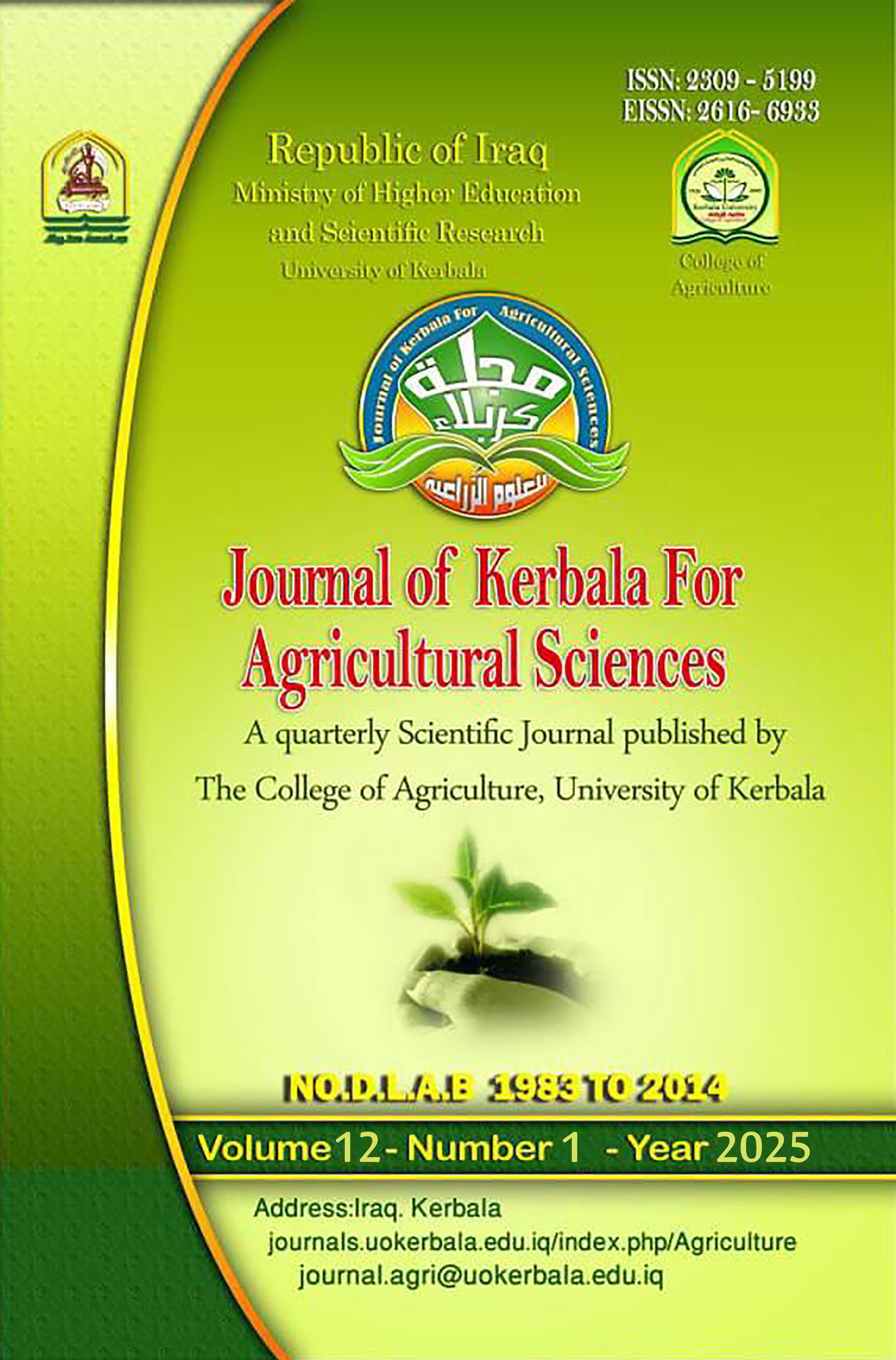Molecular diagnosis of ALS and ACCase genes and detection of po-tential mutations and responsible for herbicide resistance in Raphanus raphanistrum L. weed from five Iraqi governorates
DOI:
https://doi.org/10.59658/jkas.v12i1.3235Keywords:
Raphanus raphanistrum L., Weeds resistance, ALS gene, ACCase gene, Chemical herbicidesAbstract
A field experiment was conducted during the winter season of 2022-2023 in one of the agricultural experimental fields at Ibn Al-Bitar Vocational School, located in Al-Hussainiya district of Kerbala governorate. The aim was to evaluate the efficacy of certain chemical herbicides in controlling wild radish weeds and to identify potential mutations in the ALS and ACCase genes responsible for resistance to some chemical herbicides. The experiment was designed according to a randomized complete block design (RCBD) with a split-plot arrangement and three replications. The main plots included five groups of wild radish seeds from five Iraqi governorates (Najaf, Karbala, Babylon, Wasit and Diwaniyah), while the subplots included four chemical herbicides (Navigator, Tatsteler, Mark Zone and Decimate), in addition to the untreated control. Laboratory results showed the presence of missense mutations in the ALS (Synthase acetolactate) gene in the seeds of Karbala, specifically a missense mutation at codon 349. For the seeds from Najaf, a frame shift mutation was identified, affecting codons 165, 166, 167, 168, 169 and 170. Additionally, a missense mutation was detected in the ACCase (Acetyl-CoA carboxylase) gene in the seeds of Babylon in codon 229. Regarding the field results, the seeds from Wasit weeds excelled by exhibiting the lowest average weed height and chlorophyll content after 60 and 90 days of spraying (60.82 cm and 33.12 SPAD, 80.25 cm and 37.57 SPAD for the two periods, respectively). In contrast, the seeds from Diwaniyah wild radish (Raphanus raphanistrum L.) weeds excelled in terms of control and inhibition percentages after 60 and 90 days of spraying (41.63% and 31.52%, 39.71% and 30.32% for the two periods, respectively). Additionally, Navigator herbicide was notably effective in reducing the height of wild radish weeds, decreasing chlorophyll content, and achieving the highest control and inhibition percentages.
Downloads
Published
How to Cite
Issue
Section
License
Copyright (c) 2025 Copyright (c) 2024 is the Author's article. Published by the Journal of Kerbala for Agricultural Sciences under a CC BY 4.0 license

This work is licensed under a Creative Commons Attribution 4.0 International License.
Licensing Terms
All articles are published under a Creative Commons License and will be directed to the Creative Commons Attribution 4.0 International License (CC BY 4.0) That permits use, distribution, and reproduction in any medium, provided the original work is properly cited. This license also allows the work to be used for commercial purposes.
Use by both non-commercial and commercial users
This content is licensed under a Creative Commons Attribution 4.0 International (CC BY 4.0) license, permitting use by both non-commercial and commercial users. Individual users may access, download, copy, display, and redistribute the articles to colleagues, as well as adapt, translate, and text- and data-mine the content, subject to the following conditions:
- The author's moral rights, including the right of attribution and the right to protect their work from derogatory treatment, are respected.
- Where content in the article is identified as belonging to a third party, users must ensure that any reuse complies with the copyright policies of the owner of that content.
- If the article content is reused for research or educational purposes, users should maintain a link to the appropriate bibliographic citation, including the DOI and a link to the published version on the journal's website.






